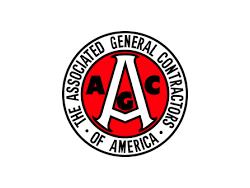Construction Material Costs Climb 7.4% Over 12 Months
Arlington, VA, October 11, 2018-The cost of many products used in construction climbed 7.4% over the past year due to double-digit increases in commonly-used construction materials, according to an analysis by the Associated General Contractors of America of new Labor Department data.
Association officials noted that the cost increases come as many construction firms are already grappling with shortages of skilled craftsmen essential for projects but have limited ability to increase prices for their services.
"The new construction materials cost data likely under-reports actual price increases, since federal officials collected most of their data in the first half of the month, before new tariffs affecting many construction materials started," said the association's chief economist, Ken Simonson. "Contractors are paying more for the materials they use and workers they employ but aren't able to pass most of those new costs on to their clients."
Simonson noted that the producer price index for inputs to construction industries-a weighted average of all goods and services used in construction-increased 0.2% from August to September and soared 6.2% since September 2017, while the index for goods except services rose at a faster pace of 7.4%. In contrast, an index that measures what contractors say they would charge to construct five types of nonresidential buildings rose just 3.5% over the year, indicating that contractors were absorbing more of the costs than they were passing on to owners.
Diesel fuel, steel pipe and tube, asphalt paving mixtures and aluminum products were among the diverse products that contributed to the large year-over-year cost increases, the economist said. He pointed out that from September 2017 to September 2018, there were producer price index increases of 29.3% for diesel fuel, 22.1% for steel pipe and tube, 11.7% for fabricated structural metal, 11.2% for asphalt paving mixtures and blocks and 10.7% for aluminum mill shapes. Additionally, the administration recently imposed an interim tariff of 10% on $200 billion worth of Chinese imports, including goods important to the construction industry, and plans to increase the rate to 25% in the new year.
A survey the association released in August found that 80% of respondents reported difficulty filling hourly craft worker positions. As a result, 62% of firms report they are paying higher salaries to attract and retain workers. "The more firms get squeezed by higher materials and labor costs, the less likely they are to continue hiring and investing in new equipment," said Stephen E. Sandherr, the association's chief executive officer.
Related Topics:Associated General Contractors of America , RD Weis
